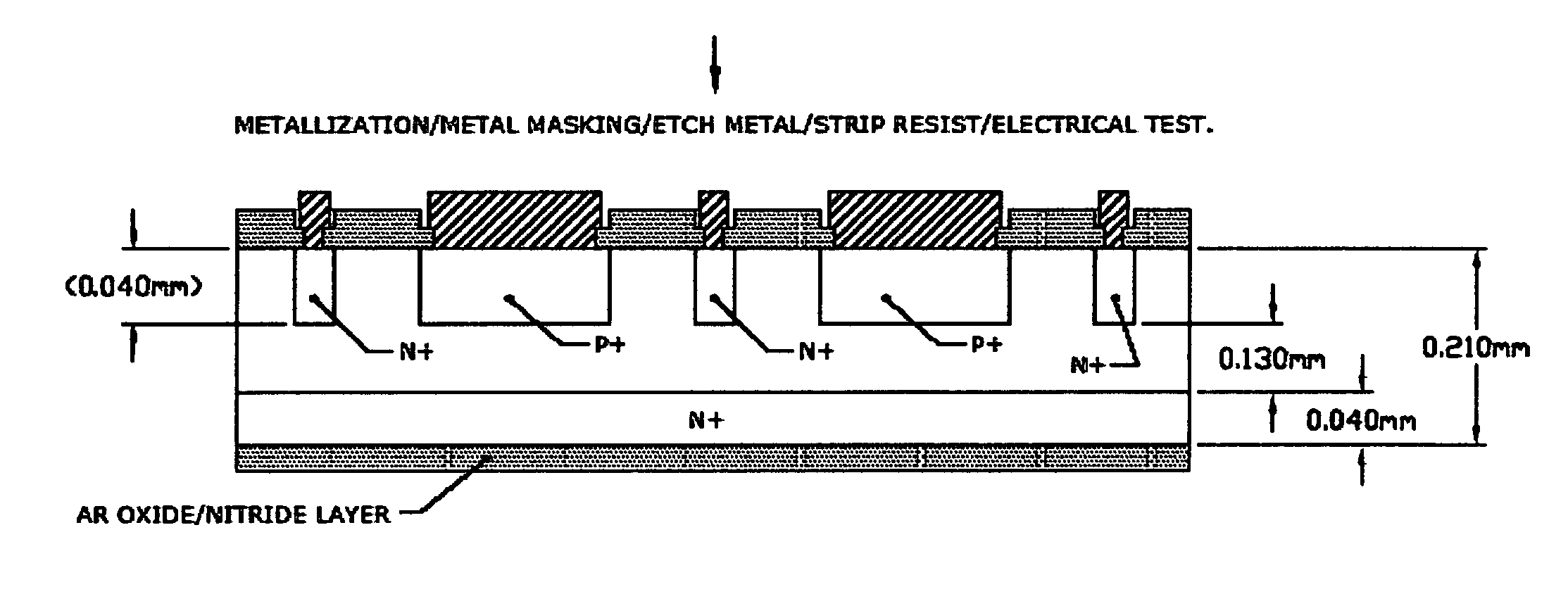Deep diffused thin photodiodes
a thin, diffused technology, applied in the direction of electrical equipment, semiconductor devices, radio frequency controlled devices, etc., can solve the problems of unmatched user-friendliness, insufficient wafer strength to handle processing, and difficult use, etc., to achieve low crosstalk, low radiation damage, and high device performance
- Summary
- Abstract
- Description
- Claims
- Application Information
AI Technical Summary
Benefits of technology
Problems solved by technology
Method used
Image
Examples
Embodiment Construction
[0022]The invention described herein comprises a plurality of photodiodes, optionally organized in the form of an array, including p+ deep diffused regions or p+ and n+ deep diffused regions. The photodiode arrays have an assortment of beneficial performance characteristics, including, but not limited to, low cost, being economically, technically, and operationally feasible, having high sensivity with low cross talk, and use of reasonably thin, large diameter wafers.
[0023]More particularly, the current invention is a photodiode array having a substrate with at least a front side, and a back side and a plurality of photodiodes integrally formed in the substrate forming the array. Starting from the front side, each photodiode has a passivation layer comprising, for example, SiO2 / Si3N4, and an active high resistivity layer comprising, for example, n-type silicon. The active high resistivity layer comprises at least five regions of alternating conductivity type. In one embodiment, the a...
PUM
 Login to View More
Login to View More Abstract
Description
Claims
Application Information
 Login to View More
Login to View More - R&D
- Intellectual Property
- Life Sciences
- Materials
- Tech Scout
- Unparalleled Data Quality
- Higher Quality Content
- 60% Fewer Hallucinations
Browse by: Latest US Patents, China's latest patents, Technical Efficacy Thesaurus, Application Domain, Technology Topic, Popular Technical Reports.
© 2025 PatSnap. All rights reserved.Legal|Privacy policy|Modern Slavery Act Transparency Statement|Sitemap|About US| Contact US: help@patsnap.com



